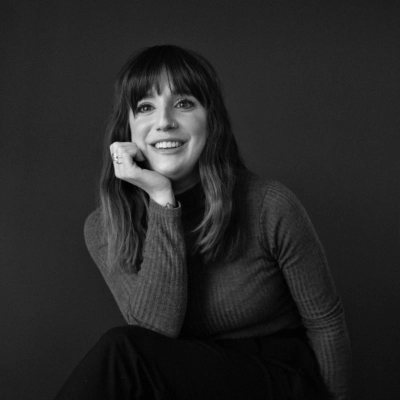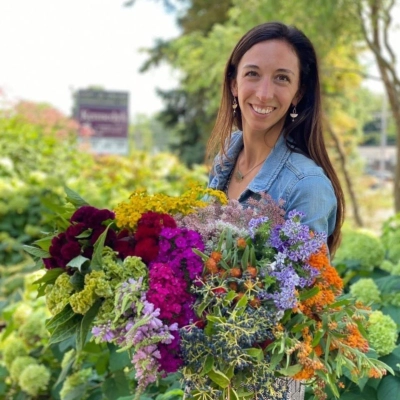13 Types of Gardens to Design and Create
Garden design professionals have identified thirteen distinctive garden styles that transform outdoor spaces into functional and beautiful environments. These garden types range from cozy fire pit settings to ecological pollinator havens, each offering unique benefits for homeowners and communities alike. Expert landscapers recommend selecting a garden style that aligns with both your aesthetic preferences and practical needs for optimal enjoyment and sustainability.
Fire Pit Gardens Create Cozy Outdoor Rooms
love making and planning out garden spaces, but one of my favorite garden makeovers to work on is a fire pit garden. It's such a cozy idea to gather around the fire with friends and family. There's just something special about spending time around a fire with loved ones. I think my favorite part about a fire pit garden is how inviting and cozy it can feel. It's essentially a little outdoor room that everyone can enjoy.
My recommendation to others interested in this garden design would be to plan out the layout first. Consider the size of your yard, and where you want to place the fire pit. Think about factors like safety and convenience when deciding on the placement of the pit. It's also important to choose the right type of fire pit for your space. You could opt for a stone or metal fire pit, or even a built-in fire pit. Then, create a seating area around the pit with comfortable chairs or benches. Don't forget to add some ambient lighting, like lanterns or string lights, to create a cozy atmosphere. You can also incorporate some plants and natural elements around the fire pit area to help it blend into your yard and feel more inviting.
Native Plant Gardens Boost Value and Sustainability
From a real-estate investor and cash buyer perspective, my favorite garden to design is a drought-tolerant, native-plant landscape that frames a compact outdoor living area—clean hardscape, purposeful lighting, and a few edible or fragrant accents. It appeals because it lowers maintenance and water costs, withstands climate stress, and adds usable square footage that buyers can imagine using year-round, all while delivering strong curb appeal that stands up to inspection and appraisal. My advice to someone wanting to create a similar garden is to start with a site assessment (sun, drainage, soil), then choose a tight palette of 6-10 native or well-adapted perennials that bloom across seasons; design a small, multi-use outdoor room with seating, dining, and a herb bed, backed by durable, permeable hardscape; install an efficient irrigation system with a smart controller and drip lines, plus mulching and soil amendment; plan for year-round interest with evergreen structure and color through foliage and winter blooms; budget in phases (hardscape first, plants later), hire reputable landscapers or irrigation pros, and document maintenance routines so the property looks cared for even during showings. This approach delivers lasting value by combining aesthetic appeal with predictable upkeep and a faster path to market.

Cottage Gardens Embrace Bold Colors and Freedom
I personally love designing cottage gardens! I love any kind of gardening that produces this more lush and eclectic look, and there's something so cozy and inviting about a well done cottage garden. I enjoy coming up with a variety of colors to use in the flowers and plants, and it's also fun planning out different hardscaping elements such as garden paths, trellises, benches, and so on.
When you're looking to create a cottage garden, my top advice is to have fun with it, and don't worry too much about keeping things limited to garden beds or similar. Cottage gardens by nature have a bit of a wilder, even slightly overgrown appearance, so it's a great opportunity to be bold in your choices and "color outside the lines," so to speak.
Mixed-Use Gardens Extend Living Space Outdoors
I enjoy designing functional outdoor spaces that feel like an extension of the home. My favorite is a mixed-use garden that combines clean lines, practical walkways, and greenery. What appeals to me is how a well-designed garden can transform a backyard into both a retreat and an entertaining space. I approach these projects with the same mindset I apply to remodeling: planning every detail, from layout to lighting, to ensure the final result is cohesive and enjoyable.
For someone looking to create a similar garden, I suggest starting with the purpose of the space. Think about how you'll use it most, whether for relaxing, entertaining, or playing, and let that guide the design. Balance hardscaping with plantings to make the space functional but inviting.
Another key piece of advice is to consider maintenance. Choose materials and plants that fit your lifestyle and climate. A garden that looks great but requires constant work can quickly become frustrating. Finally, don't be afraid to mix textures and heights. Varied plantings and features create depth and interest without feeling cluttered.

Community Gardens Transform Land Into Connection Points
The most rewarding gardens to create are functional community gardens that double as learning spaces. Their appeal comes from the way they transform underused land into a source of both food and connection. Designing them means balancing practical layout—raised beds, irrigation lines, composting areas—with gathering spaces where neighbors can meet, share techniques, and build trust. The educational component, whether through signage or scheduled workshops, extends the value beyond produce by helping participants understand nutrition, sustainability, and resource management.
For someone wanting to build a similar garden, start with clear governance and shared responsibility. Define who maintains which sections, how harvests are divided, and how decisions are made. Structure creates the reliability that keeps enthusiasm from fading, allowing the garden to flourish as a long-term community asset rather than a temporary project.

Native Pollinator Gardens Support Local Ecosystems
I love creating wildflower gardens, pollinator gardens, and native plant gardening in general. Something about creating these types of gardens makes me feel like I am doing my part for the local ecosystem around me. Plus, these can create some really stunning looks for your garden and landscaping. I have also found that using native plants and flowers can help cut down on the number of pests I see around, especially invasive species. And it's so fun seeing a pollinator garden attracting all kinds of different pollinators, from the bees and the butterflies to less common species like hummingbirds. Really, my top advice for creating a pollinator or native plant garden is just to do your research first. Whether you're seeding your yard with clover or simply planting a packet of native wildflower seeds, you are doing your part to help support your local species.

Raised Beds Combine Function With Design Elements
I enjoy designing raised hardscape gardens. Raised beds are versatile and bring a nice design element to a backyard. Raised beds bring together multiple components, including hardscaping, landscaping, and a functioning space. More pros to using raised beds: the hardscape allows you to sit on the edge and work or just bend over without needing to go all the way down to the ground level. Raised beds also work well when incorporating walkways and pathways between them.
I enjoy designing raised beds, which bring functionality and design elements together in a unique and useful way.

Kitchen Gardens Link Outdoor Beauty With Meals
A functional kitchen garden is the most rewarding to design because it combines beauty with utility. Raised beds filled with herbs, tomatoes, peppers, and leafy greens create a space that is visually rich while also supplying fresh ingredients for daily meals. What makes it appealing is the immediacy—you can step outside and gather food minutes before cooking, which connects the garden directly to family life. For anyone wanting to create a similar space, start small with two or three raised beds and focus on plants you cook with regularly.
Good soil and consistent watering matter more than variety at the beginning. As confidence grows, expand to include perennials like rosemary or fruit-bearing shrubs that return each season. The joy of a kitchen garden lies in its practicality, and building it gradually ensures it remains a source of satisfaction rather than overwhelm.

Nature-Led Gardens Celebrate Local Flora Naturally
My favorite gardens to design are organic, nature led spaces that celebrate local flora and feel like a natural extension of their surroundings. I love the appeal of a garden that is not overly structured, where plants grow, layer on top of each other and textures change with the seasons. Using local flora, invites local pollinators to visit and the garden invokes a sense of connection and calm that is restorative and much needed in our fast paced world.
To start your own organic lead garden, get to know your local plants! These are naturally adapted to your environment, require minimal maintenance and support biodiversity. Embrace a looser, less perfect planting style, working with plants that come in a range of heights to keep that organic and natural feel. Natural stone elements and winding paths can enhance the space and make it more peaceful. Organic spaces take time to grow, it's a good lesson in patience for you and your garden. They grow and evolve with each season, take the time to embrace and watch your garden thrive.

Minimalist Rock Gardens Offer Clean Enduring Design
I'm especially drawn to minimalist rock gardens because they combine durability with clean design. They work well in almost any climate and require less upkeep than traditional gardens. The interplay of stone, gravel, and carefully chosen plants creates a striking, low-maintenance space that feels both modern and natural.
The key to building this type of garden is structure. Begin with rocks of varying sizes placed with intention. They should feel anchored in the landscape rather than scattered randomly. Gravel or crushed stone fills the gaps and provides excellent drainage. This foundation ensures the garden can withstand changing weather and seasons.
Once the base is in place, add drought-resistant plants. Succulents, ornamental grasses, and alpine flowers thrive in rock gardens and contrast beautifully against the stone. Choose a palette of plants that bloom at different times to create interest throughout the year.
For beginners, the best advice is to start small. A corner rock garden can be just as impactful as a large one if designed thoughtfully. The result is a space that looks timeless, requires minimal watering, and holds up year after year with little effort.
Modern Minimalist Gardens Balance Simplicity With Impact
I enjoy designing modern minimalist gardens because they strike a balance between simplicity and impact. Clean lines, carefully chosen plants, and intentional spacing allow the garden to feel open and calm while still making a statement. The beauty comes from restraint; each element has a purpose, and every material is thoughtfully considered.
For someone wanting to create a similar garden, my advice is to focus on quality over quantity. Select plants that thrive in your environment and maintain consistent textures and colors. Hardscaping, stone paths, sleek planters, and lighting can transform the space without clutter. Finally, think about how the garden will be experienced daily. Every corner should feel intentional, whether it's a seating nook or a view from the kitchen.
Minimalist gardens reward patience and planning. They're about creating a sense of peace and structure while leaving room for personal expression. Start with a clear vision, and don't be afraid to remove elements that don't serve the overall design.

Urban Container Gardens Make Limited Spaces Vibrant
I enjoy designing urban rooftop or container gardens. There's a unique challenge in creating lush, vibrant spaces in small or unconventional areas. Every pot, planter, or vertical wall becomes an opportunity to experiment with textures, colors, and scents.
The appeal is in making limited spaces feel expansive and lively. You can integrate edibles, ornamentals, and evergreens to balance beauty and functionality. Watching a concrete rooftop transform into a thriving garden never gets old.
For beginners, I recommend starting small. Choose plants suited to containers and ensure proper drainage. Consider sunlight and wind exposure, and mix trailing and upright plants for visual interest. Maintenance is simpler when you plan carefully, and the sense of accomplishment is enormous.
Pollinator Gardens Balance Beauty With Ecological Purpose
I love designing gardens that attract pollinators. Creating a haven for bees, butterflies, and birds feels both beautiful and purposeful. These gardens come alive with movement and sound, and they help support the local ecosystem.
The appeal lies in the balance of color, fragrance, and sustainability. Choosing nectar-rich flowers in varied bloom cycles ensures that pollinators visit year-round, and the diversity makes the garden more dynamic.
For anyone wanting to try this, focus on native plants. They're naturally suited to your region and will thrive with less maintenance. Avoid pesticides, and think in layers, combine tall, mid-level, and groundcover plants to provide shelter as well as food. The result will be a lively, self-sustaining space that benefits both people and wildlife.






